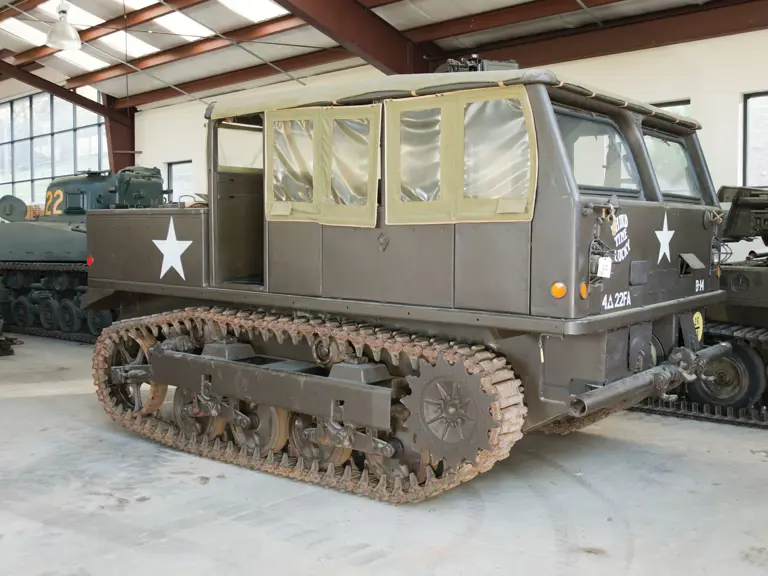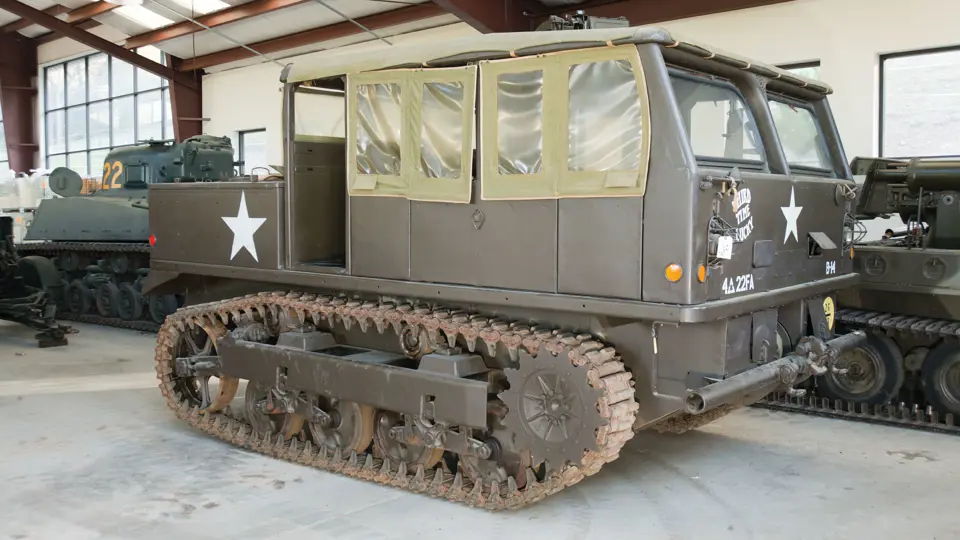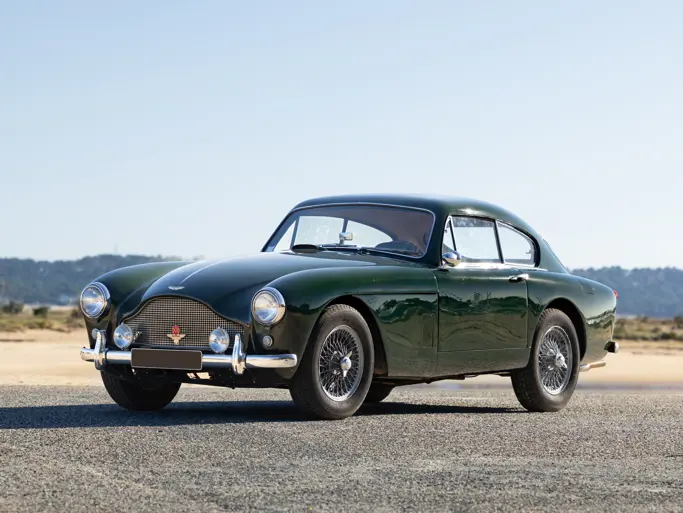 | Portola Valley, California
| Portola Valley, California
Weight: 15.2-tons (13,791-kg)
Length: 16' 4” (4.97-m)
Width: 8' 4” (2.64-m)
Height: 8' 9” (2.66-m)
Crew: 11
Armor:
None
Weapons:
-Primary
1x .50-cal M2HB machine gun
-Ammunition
550x .50-cal
Provision for:
56x 105-mm howitzer rounds or
24x 155-mm howitzer rounds
Engine: Continental R6572 6-cylinder radial engine, 207-hp
Power/weight: 13.6-hp/ton
Fuel Capacity: 100-USG (378-l)
Range: 150-miles (241-km)
Speed: 30-mph (50-km/h)
The vehicle being offered, M5A1 High-Speed Tractor, serial number unknown, is in excellent condition. It is a nice restoration with all canvas and seats in place. The engine starts and runs nicely and responds well to restart. It is equipped with T36E6 steel tracks. All roadwheels and idlers are in perfect condition. All controls perform normally. This vehicle formerly belonged to the A.F. Budge Collection in the 1980s and early 1990s.
The M5 High-Speed Tractor was designed as an artillery prime mover for guns weighing up to 16,000-pounds. The artillery pieces included in this weight range were the M2 105-mm howitzer, M1 4.5-inch gun and M1 155-mm howitzer. Development of the M5 began in 1941 with the first pilot model being delivered to Aberdeen Proving Grounds in April 1942. After successful testing there and at other locations, it was put into production in May 1943. When production ended two years later, 5,290 had been built.
The M5 used suspension components from the M3 series of light tank. It was an open cab vehicle and could carry a full gun crew with ammunition. While it was quite successful, the crew was exposed to the elements so in May 1945, the M5 was replaced on the production line by the improved M5A1. The M5A1 introduced a hard cab to better protect the crew from the elements and it also changed the driver's position from the center front of the cab to the left front. 589 M5A1's were built by the time production ceased in August 1945.
Both vehicles saw service with the U.S. Army in the Korean War. Post-war, they were exported to several countries including Austria, Japan, Pakistan and Yugoslavia.
Transport Cost to Storage: $1,848





